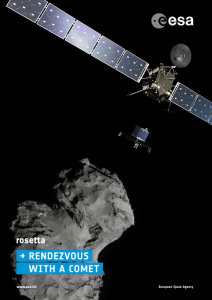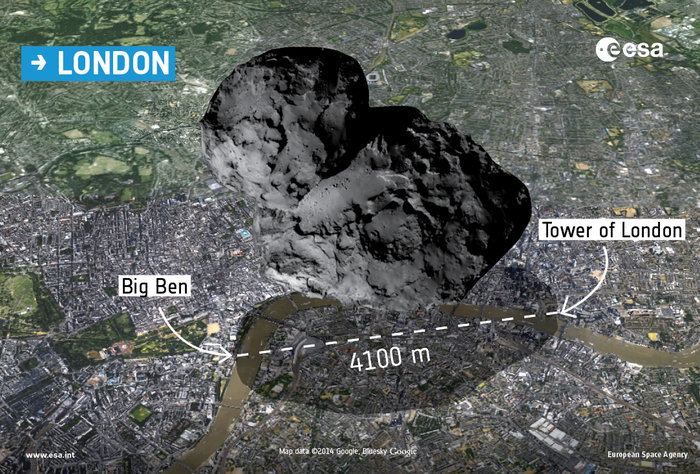The robot probe Philae touched down on Comet 67P/Churyumov-Gerasimenko at about 1605 GMT.
An enormous achievement for human kind that will be barely noticed by most people.
For 99% of human history comets were thought to be portends if not the cause of disaster, disease, and death, sent by a god or demon to warn or punish mankind. Every society on Earth known for its supposedly divinely inspired holy texts thought so.

Now these dusty snowballs from the edge of the solar system, formed billions of years before humans evolved, are known for what they really are. And should stand as a symbol of the power of science, reason, and enlightenment to sweep away the destructive veils of ignorance, prejudice and superstition masquerading as “belief” that is sadly influencing most of the world still. And that is not just referring to barbaric hoards like IS.
In an episode of the television series Cosmos, host Neil deGrasse Tyson mentioned that most of us could name more serial killers off the top of their heads than scientists responsible for the greatest advancements of our civilization. And continually we hear politicians and other civic “leaders” declaring that verifiable truth like global warming and the evolution of species from earlier forms can be believed in or not with equal validity, like other things they choose to believe in or not based on what they wish was so.
You want prophesy that actually comes true? Nothing outside of science comes close to Edmund Halley using Newton’s Laws of Gravity to predict in 1705 that a comet would appear in 1758, 16 years after his death, and every 76 years thereafter.
And yet it took until the twentieth century before we learned with certainly what comets actually are and where they come from.
And now we have successfully landed a man made machine on a comet! But it has taken the collective courage and investigation of centuries of scientists to get there.
The Historic Comet Landing
The European Space Agency’s Rosetta spacecraft was launched on March 2, 2004, and traveled 6.4 billion kilometers (3.97 billion miles) through space to reach the comet on August 6, 2014. After studying the comet from a distance, Rosetta moved within 10 kilometers for closer inspection. And today the Philae probe made a successful landing on the comet’s icy surface – a first in human history.
The decent took 7 hours, without propulsion and with no certainty that it would not crash into a cliff or end up swallowed by a fissure.
“After more than 10 years travelling through space, we’re now making the best ever scientific analysis of one of the oldest remnants of our Solar System,” said Alvaro Giménez, Director of Science and Robotic Exploration at the ESA.
It will take some hours before they know exactly where it landed and to start receiving photos and data of the chemical composition of this ancient piece of the solar system, which likely formed before the planets were born some 4 billion years ago.

Related Links
Edmund Halley entry at Britannica.com
I cannot post a link to Episode 3 of Cosmos, which focuses on comets, Newton and Halley. But it is currently available on Netflix, and I highly recommend it. It is inspiring and entertaining, and has some breathtaking visual effects.